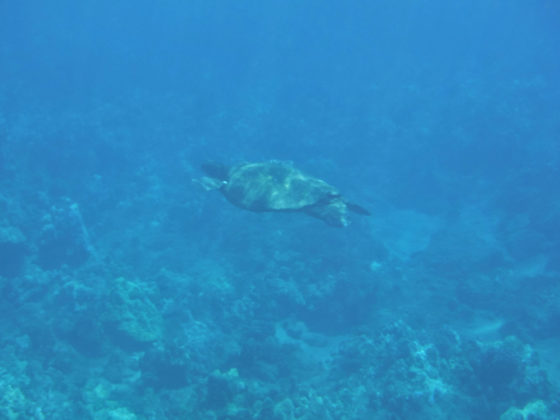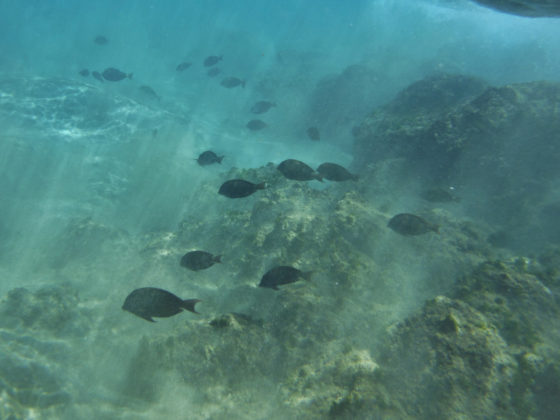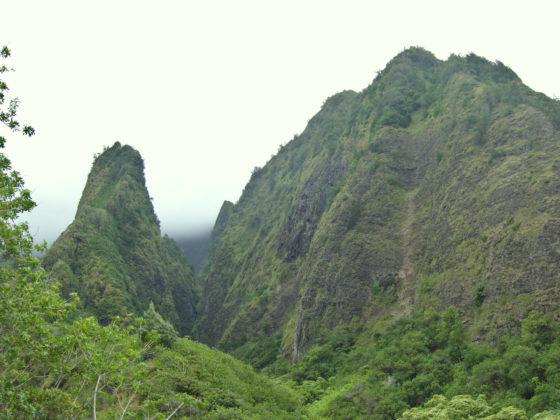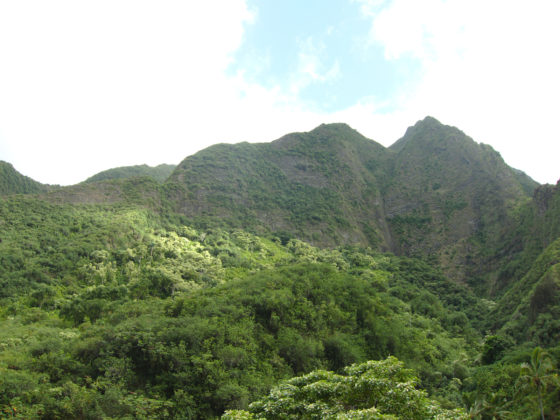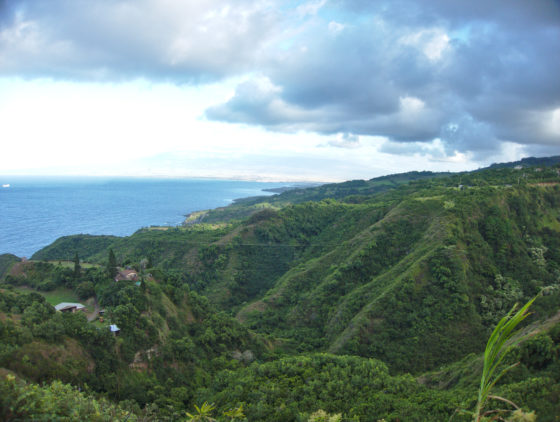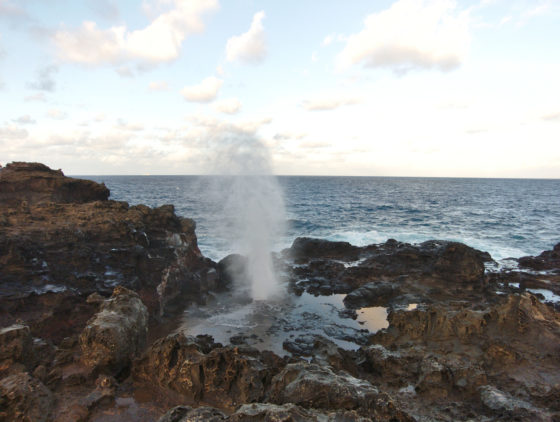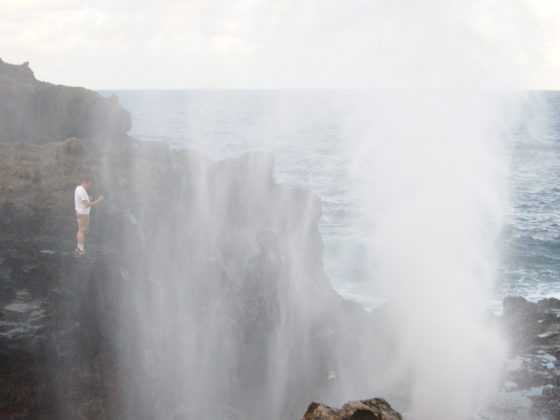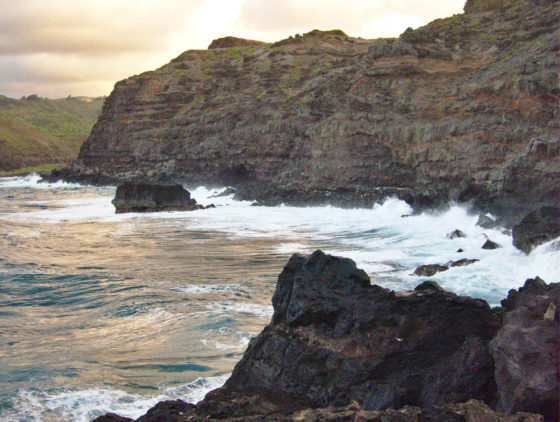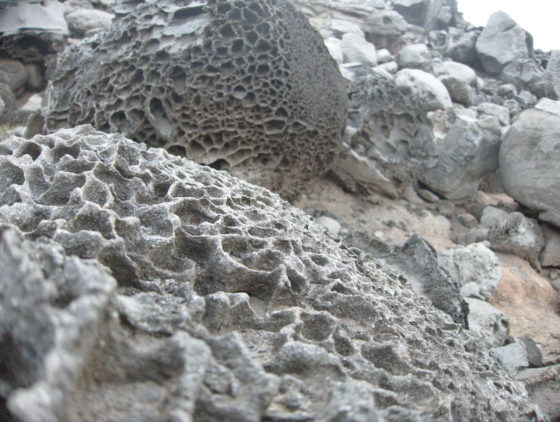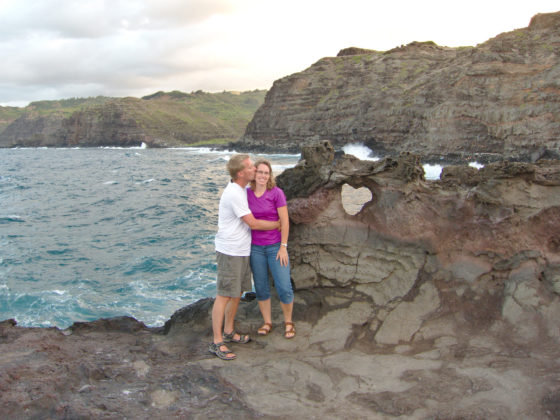We spent the day on Maui, which has a very different feel than O’ahu. It’s much more “natural”, it’s lush, and the water is crystal blue. We managed to experience all three of these in different ways…
The morning started out with more snorkeling at a few beaches in the southern part of the island. The visibility in the water was dramatically greater, allowing us to see a lot more of the coral and fish. Sea turtles abounded:
There were big schools of fish zipping around, and such a variety that I lost count of the number of different fish I’d seen.
In the afternoon we went to the Iao Valley. It’s part of the mountainous area on the northwest part of the island, and receives over 360 inches of rain a year. Doing the math, that’s an average of an inch a day! It shows, too: the valley is an amazing mix of green. The slopes are really steep, rising into the sky and often disappearing in low-hanging clouds. It’s magical.
After hiking around there a bit, we decided to head to the northern edge of the island to see the renowned Nakalele Blowhole. It’s a naturally-occurring lava tube where seawater rushes in from the surf and blasts upward through a hole. It sure sounded cool! We started the drive (well, to be clear, I was the lucky one driving), and we cruised along the Kahekili Highway. It was, without a doubt, the craziest scariest road I’ve ever driven. In most places it was one lane wide, it had no shoulder, every corner was a blind corner, and there were sheer drop-offs down hundreds of feet of cliffs. You have to honk as you approach curves because cars coming the other direction can’t see you at all, and you’ll have a head-on collision if you meet. (We narrowly avoided at least two such collisions.)
Despite the madness of the highway, it eventually wound its way to the top of the island, and granted us amazing views of the hills and green cliffs.
As usual with this trip, the photos really don’t capture the breathtaking scenery.
We continued along the road and dropped back down to sea level, where the blowhole is located. Apparently it’s a bit of a fickle beast: at times it barely bubbles as water drools out of it, and at other times it can be a powerful fountain shooting seventy feet into the air. We arrived about an hour before sunset, and the surf was pretty ferocious. I think we were lucky, because we saw water thundering out of the hole and easily going seventy feet high. It happened every couple of minutes, sort of like a quick-fire geyser.
Frankly this photo doesn’t look all that impressive, but it truly was. The ground would tremble and there would be a thumping mixed with a dull roar as the water skyrocketed from the hole. Kurt decided to climb a little closer, and he was rewarded with a blast that drenched him:
We watched it for a while and then turned our attention to the surf and rocks nearby. The waves were absolutely pounding the shore, often exploding into towering walls of water. From what I understand, it’s even more impressive in the winter months (I’m not sure why, but it probably has to do with science).
The rocks themselves are basaltic lava (like all of the Hawai’ian Islands) but here the constant pounding of surf water, and dripping from the blowhole’s geyser, have somehow eaten into the rock to form intricate and fascinating patterns. The entire area looks like another planet.
There’s a little heart-shaped hole in the rock, and I couldn’t resist a cheesy pose:
As we hiked back to the car, the sun set behind Moloka’i in the west for a beautiful finish to our day. We enjoyed a fabulous dinner at Duke’s (named for the surfer guy) and called it a night.

